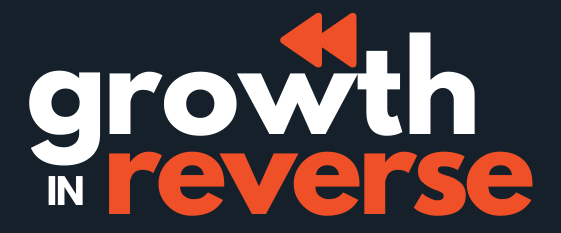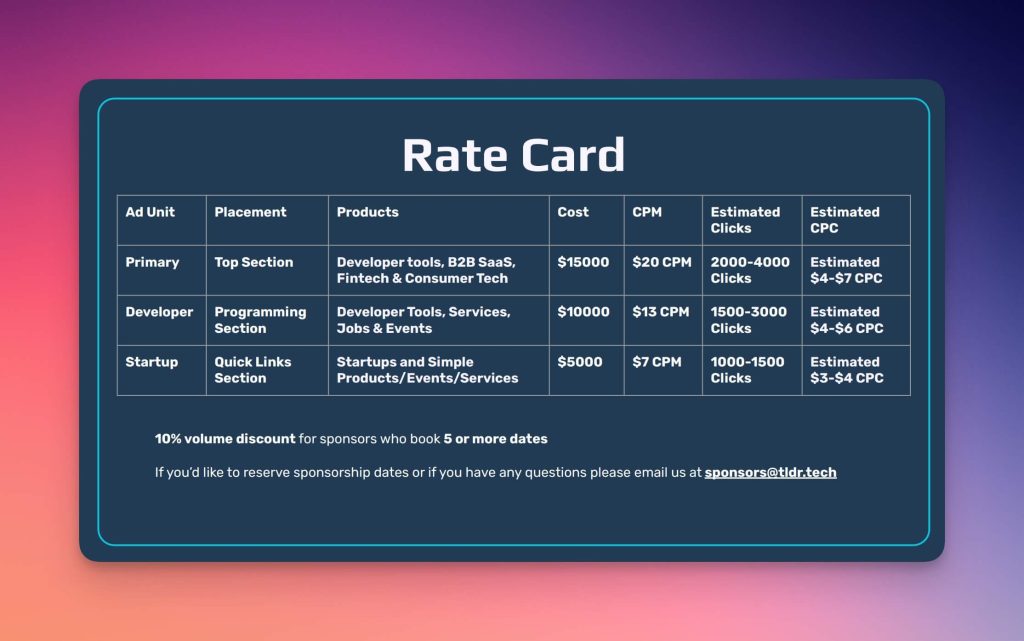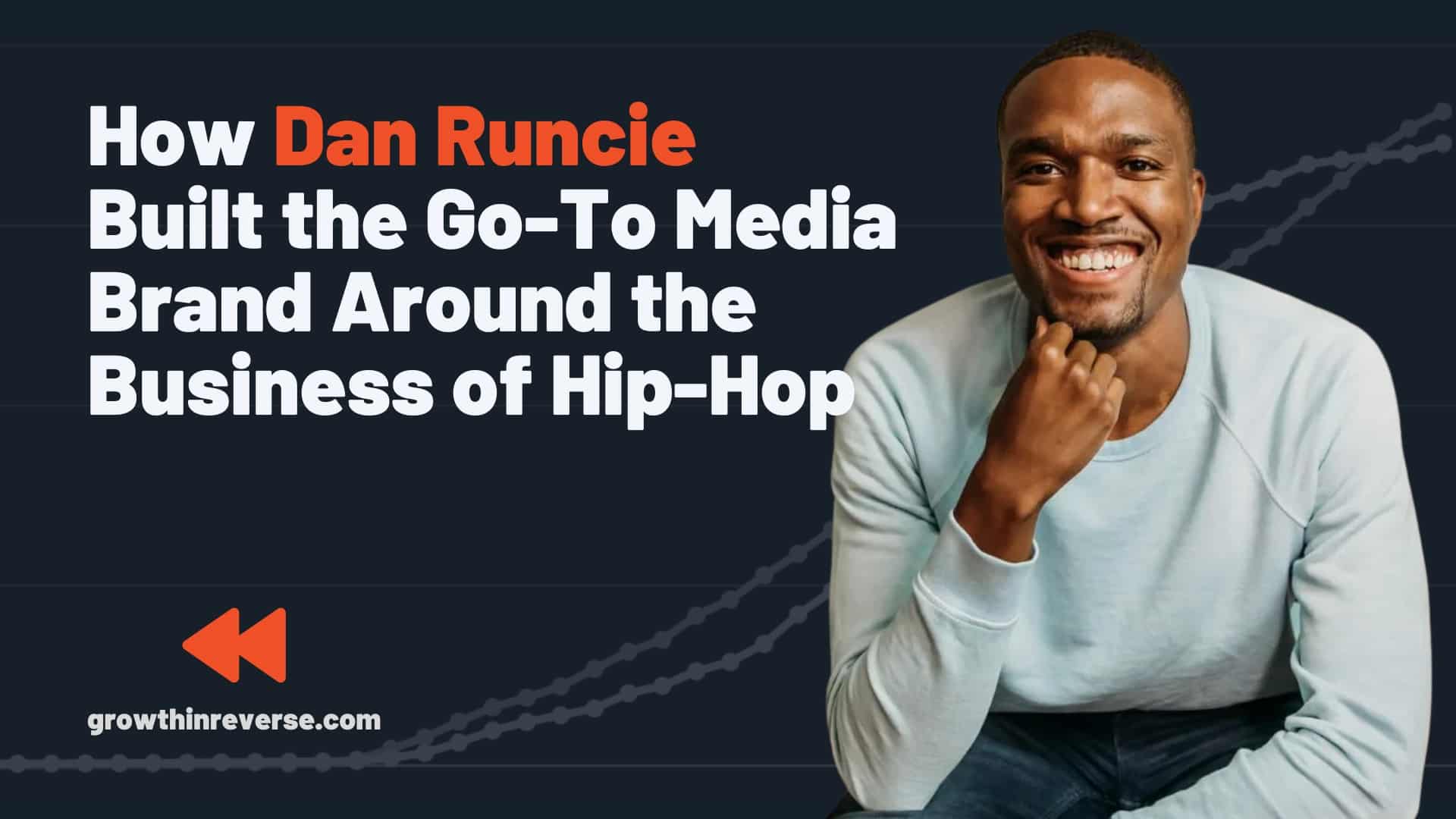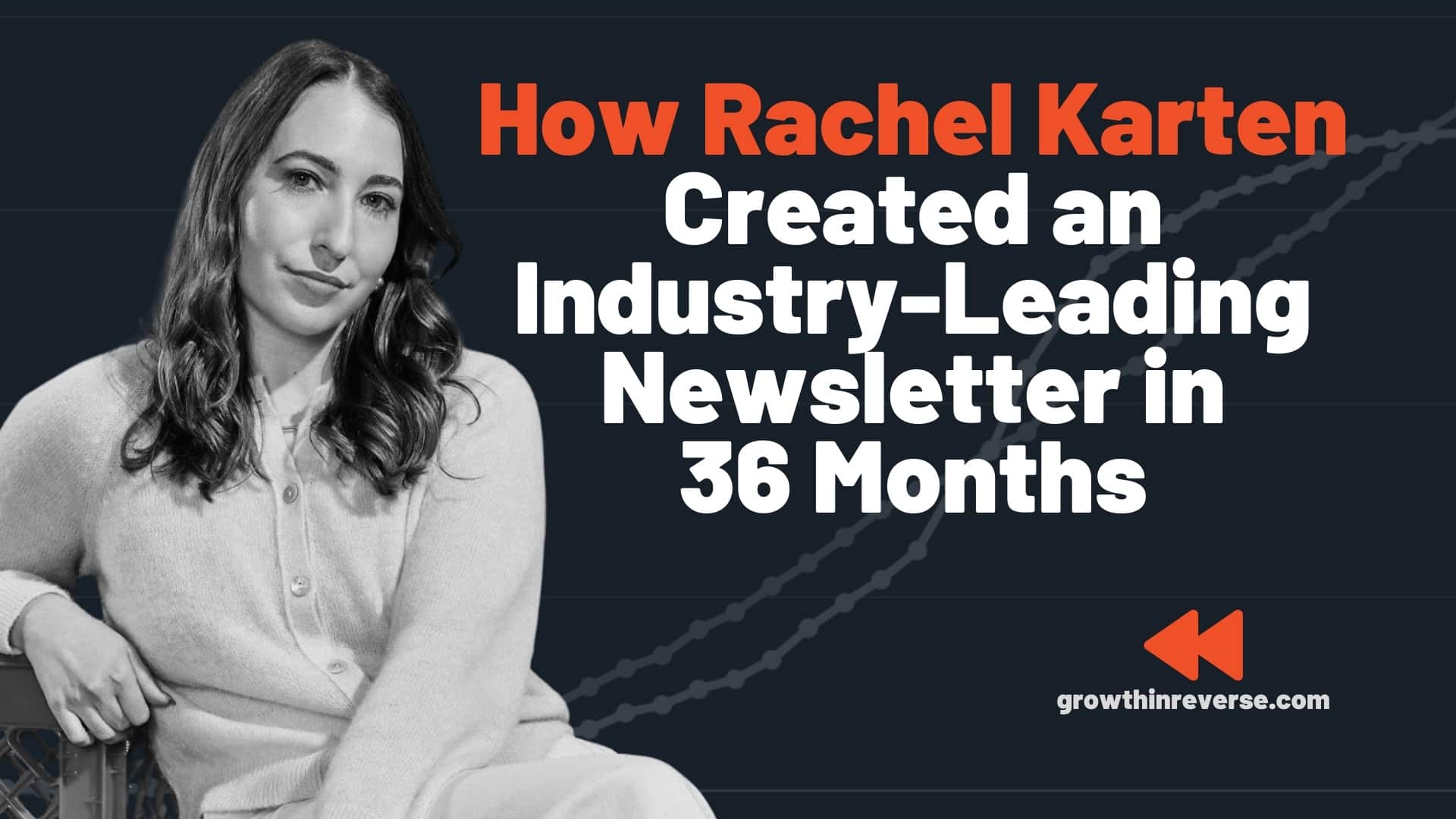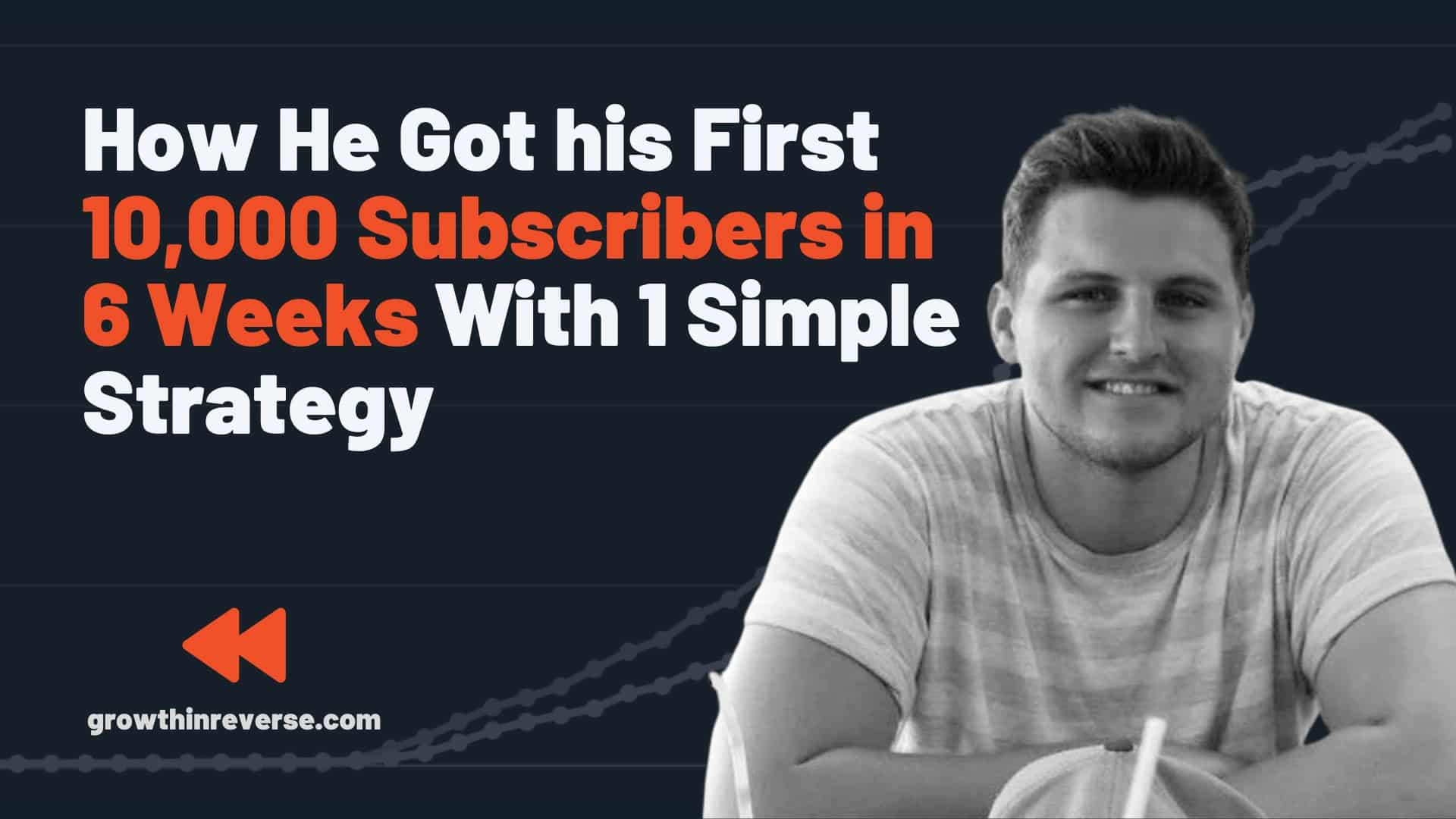How would you like to make millions of dollars per year from a newsletter that only takes around 30 minutes a day to write?
And what if you could run this business without needing a huge team to manage (and pay)?
That’s like an introvert’s dream…and that’s exactly what Dan Ni of the TLDR Newsletter has built.
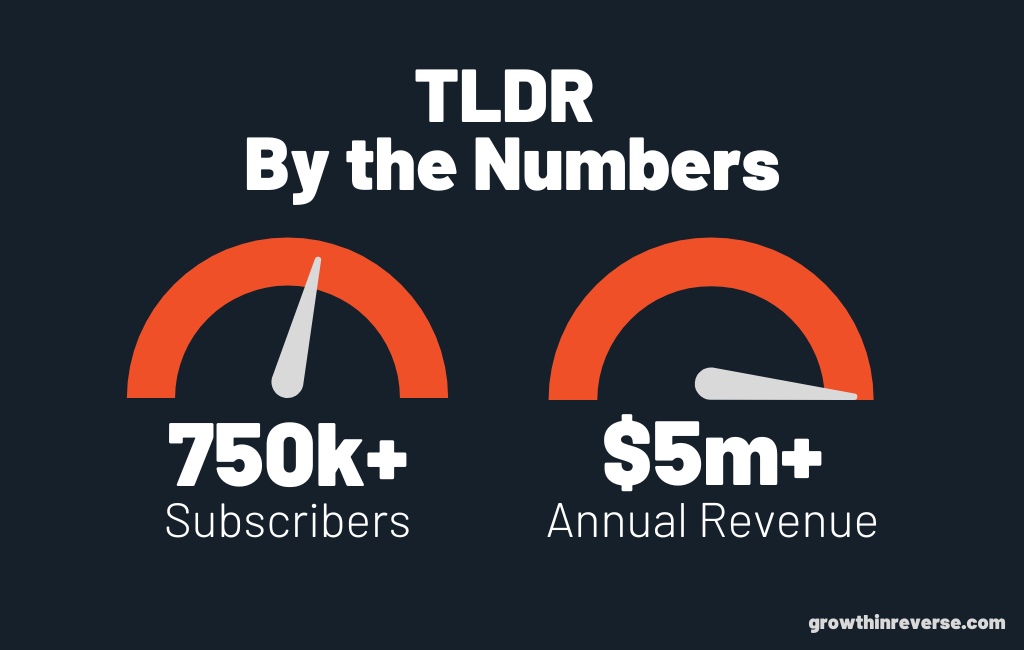
Who is this guy?
Dan Ni went to school for Math and Economics. After graduation, he went into the financial field as a stock trader in New York.
But he must have been tinkering around with software and engineering behind the scenes because he started Scraper API shortly after – which allowed developers to scrape and pull in data from any webpage with minimal code.
He had been running that business for a few years and it was going really well, to the tune of $4 million ARR. Sound familiar?
But he was always fascinated by the latest Tech and news stories of the day. He found himself more and more interested in the happenings of the day, than in running that company anymore.
So he did what any rational person would do, and started a newsletter. 🙂
How the TLDR Newsletter Makes Money
The TLDR newsletter makes a vast majority of its revenue from sponsors of the newsletter. While there might be affiliate links sprinkled throughout, I don’t believe there are.
Sponsorships
Dan is seemingly a master at sponsorships now. He’s been seeking out sponsors for the newsletter since close to the beginning of running it in late 2018.
I found the Sponsor media kit for TLDR, and it’s quite insane.
He is now able to charge $15,000 per issue…for one placement.
And there are three placements, with the other two being $10k and $5k respectively.
If he sells all 3 placements for every issue, that’s $30k per issue.
And this newsletter gets published every weekday.
That’s $150k per week.
Or $600,000 per month.
Or $7.8 million every year.
Now, I’ve seen a few that didn’t include the $5k package, so let’s be conservative here.
Even if he only sells his main sponsor slot for each issue, that’s $3.9 million per year.
WILD.
But, this must take him a ton of time to put together, right?
He has said multiple times that the newsletter takes him around 30 minutes a day to put together….
He built this thing by himself. And while he has a few assistants helping now, there’s no way he’s not pulling in at least 80% profit margins.
This is why I love the newsletter industry so much.
And I’d be lying if I said I wasn’t actively trying to stop myself from starting a daily newsletter. 🙂
The Growth Timeline of TLDR
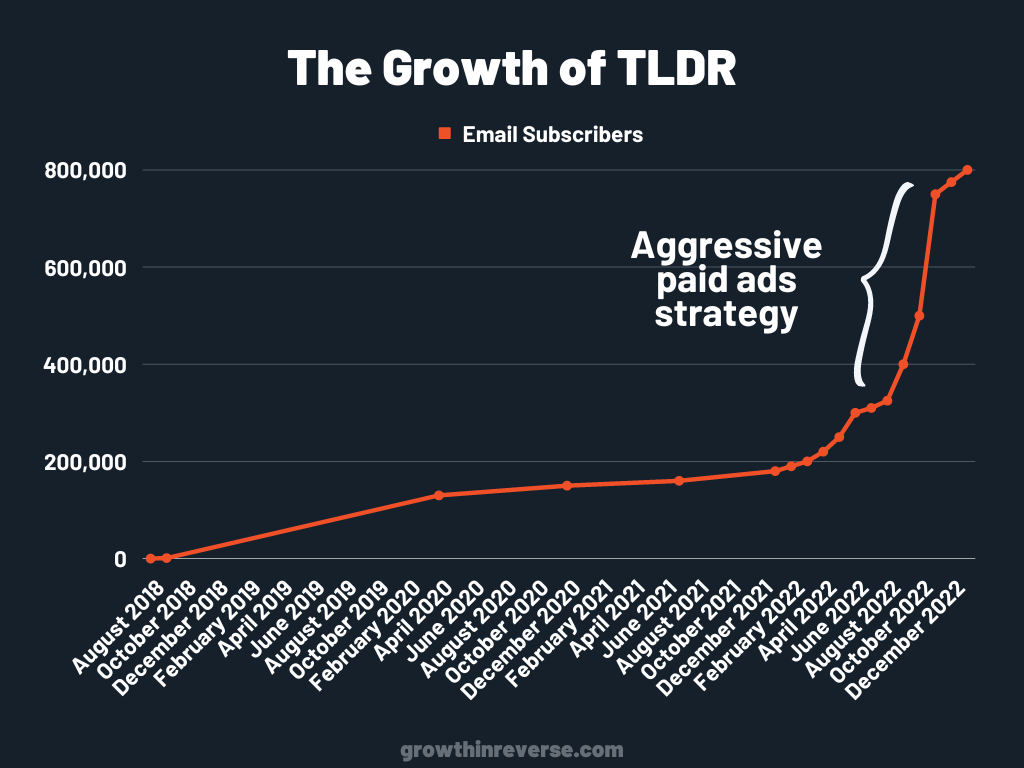
TLDR started in August of 2018, and while the first few years of growth look steady, it’s pretty insane if you look at the numbers.
In the first 20 months, Dan grew the newsletter from 0 to 130k subscribers.
And then he grows it steadily until early 2022 when it starts to go parabolic.
Let’s dive into the 3 growth levers Dan uses to grow TLDR.
Dan’s Growth Levers for TLDR
💰 1. Paid advertising. Not everything has to grow organically – Dan has been wisely using social and paid ads since the beginning of the newsletter’s history.
🧪 2. Experimentation and testing. Dan has been refining his landing page for a long time, and also cleverly takes feedback from his readers without asking them.
🤝 3. Other people’s audiences. Dan used a combination of sponsoring other newsletters and cross-promotions to grow in the early days.
💰 1. Paid Advertising
I’m thrilled we’re finally talking about this.
Paid ads get a bad rap around certain online communities.
There are lots of people who go around proudly talking about how they grew “without spending any money on paid ads.” Almost like it’s a badge of honor.
But it begs the question – “why?”
Paid ads don’t make your business any less of a business.
They’re just another growth lever you can use when you need them.
::rant over::
Okay, back to Dan’s growth strategies.
Linear vs % Based Growth Strategies
On the Growth Lessons podcast, Dan talks about the two buckets he puts growth strategies into:
- Percentage-based growth strategies
- Linear growth strategies
Cross-promotions are an example of a more percentage-based method because, in the beginning, you can only swap audiences with newsletters that are around the same size as you.
The returns on cross-promotions are much smaller when you’re just getting started.
Of course, the percentage of growth is big, meaning you could go from 100 subscribers to 150, and that’s a big % increase. But it’s still only 50 subscribers.
But with paid ads, you’re implementing what he calls a more “linear” growth strategy, so you’re only limited by the dollars you can spend.
You could spend $100 and get 50 subscribers.
Both have their place, but he advocates for paid ads in the beginning because of this.
He also mentions that as a bootstrapped person running a newsletter, you need some kind of momentum to keep going. Otherwise, it can be easy to just give up too soon and stop sending out your newsletter.
After all, 10% of newsletters shut down within the first year of being launched.
Running paid ads could give you that momentum.
Let’s take a look at the platforms Dan has run ads on.
Quora and Reddit Ads
Dan has been running paid social ads since the beginning of the newsletter and recommends running some kind of paid ads if you have the budget.
Most companies go to Facebook and Google first, because there is a ton of scale to be had there. But he advocates starting with Reddit and Quora for people with smaller budgets.
He did this as well. He started off spending $50 a day on Reddit and Quora ads, which helped him get to 1,000 subscribers in the first month.
On Quora, you can bid on specific questions. So he would put an ad on questions like “What are the best tech newsletters?”, and said he’d spend $2 and get 5 email subscribers. For context, that’s really cheap for paid ads.
With Reddit ads, you can target people who are active in particular subreddits, which can make it easy to get in front of your ideal audience.
I did some digging and found this Reddit ad he was running:
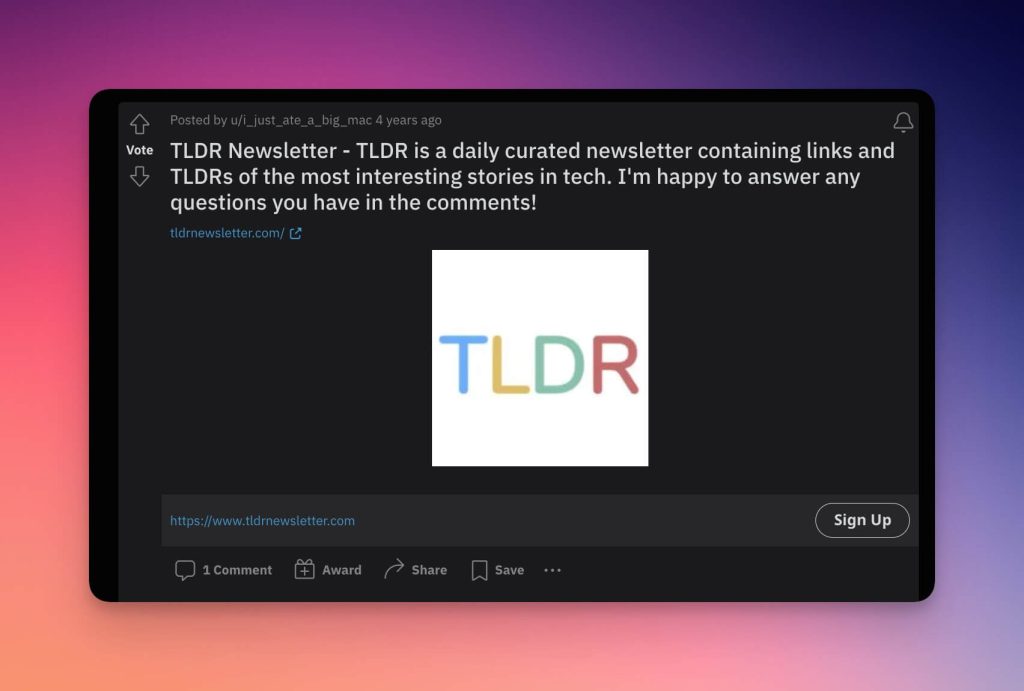
Facebook and Instagram Ads
Eventually, he moved over to Facebook and Instagram ads to grow his newsletter.
He talks about using lookalike audiences on Facebook because they get him really good results.
Essentially, these are people who “look like” a group you’ve identified.
You can either upload your email list to Facebook or you can use the Facebook pixel and target based on website visitors. Then the magical AI within Facebook will go hunting for people similar to those folks.
Both used to be a lot more effective than they are now with the privacy changes, but they can still work.
Note: I run paid ads for clients, so if I’m getting too technical here, I apologize 🙂
You can also target people based on interests and demographics as well, so if you have a very specific type of person you’re building a newsletter for, these can work well.
Here are some of the Facebook ads he’s been running lately:



Twitter Ads
Dan has also been running Twitter ads for a while now.
This one that I got a few days ago shows that the original post was created in March of 2022, so it’s likely working well enough that he just leaves it alone.

LinkedIn Ads
He was also running LinkedIn ads, except with a different intent.
Instead of trying to get subscribers, he was trying to get more sponsors.

I’m going to guess this didn’t work out super well, as there are only a few ads and it looks like they aren’t running (since the subscriber number is out of date).
Rocket Ship Growth 🚀
In the last 7-8 months, Dan has gone completely insane with the amount of money he’s spending on paid ads.
Look at these growth numbers for 2022 alone. And that’s up through November.
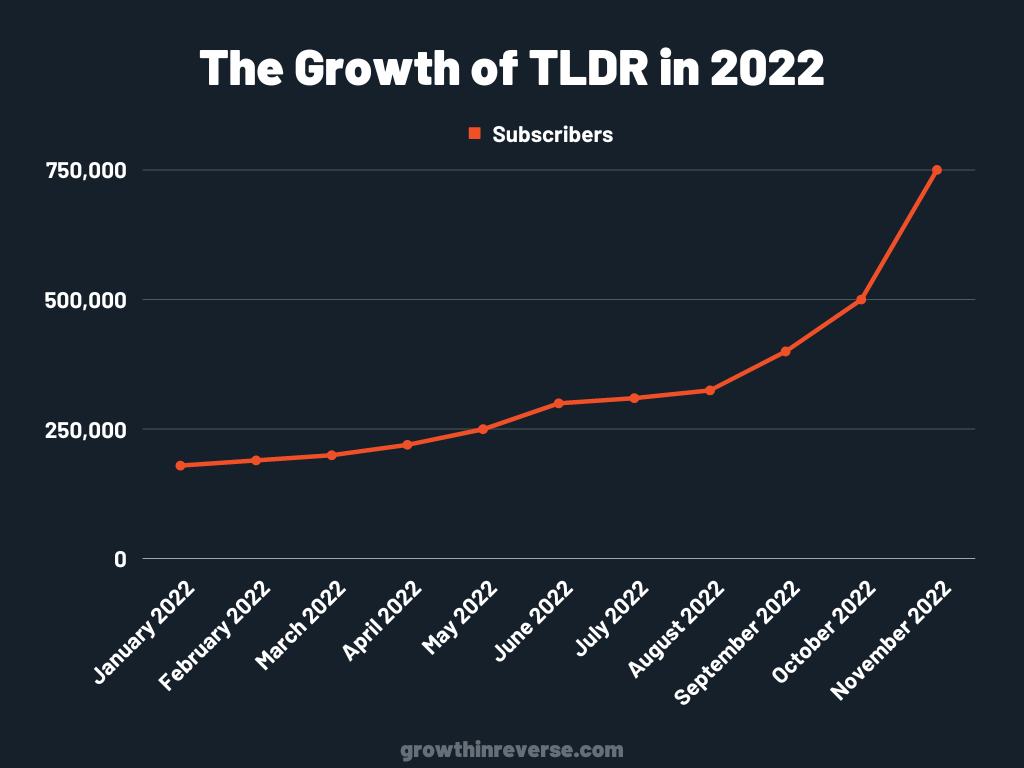
He hasn’t updated the number of subscribers since then, but I’d imagine he’s pushing close to a million subscribers.
I almost have to wonder if he is getting ready to sell, because he’s growing this thing so fast.
Either way, it’s absolutely insane growth. And also the power of paid advertising when done right.
🧪 2. Experimenting and Optimization
It was kind of hard to find the exact things Dan did to grow his list during the first year or two. But he did post a lengthy article on Indie Hackers around 20 months into running the newsletter.
One of the main things he calls out in that post, as well as on the podcast interviews he’s done is optimizing your landing page.
If you recall, this post was the reason that Dru Riley went ahead and optimized his landing page until he got his conversion rate was around 50%.
Here are some of the tweaks that Dan used to get his landing page converting at such a high percentage:
1. Make your website lightning fast ⚡️
One of the bigger improvements you can make to your website or landing pages is improving the page speed. This is especially true if you are running paid ads and/or have a lot of people coming to your site on mobile devices.
There are a ton of benefits to doing this, namely improving your audience’s experience, but also improving your sign-up rate.
An easy (and free!) way to get started with this is using Cloudflare. There is a little bit of technical stuff required to set this up, but it’s not hard. And there are tons of YouTube videos on how to do this.
2. Adding OAuth signup buttons
Have you ever signed up for a website or software, and they give you the option to create an account with Google or Twitter? Those are OAuth buttons.
Dan implemented this on his landing page and said that over 50% of mobile visitors used those buttons to sign up. Instead of having to type their email, they could just click a button to sign up with Twitter, and then Dan can add that email address to his subscriber list.
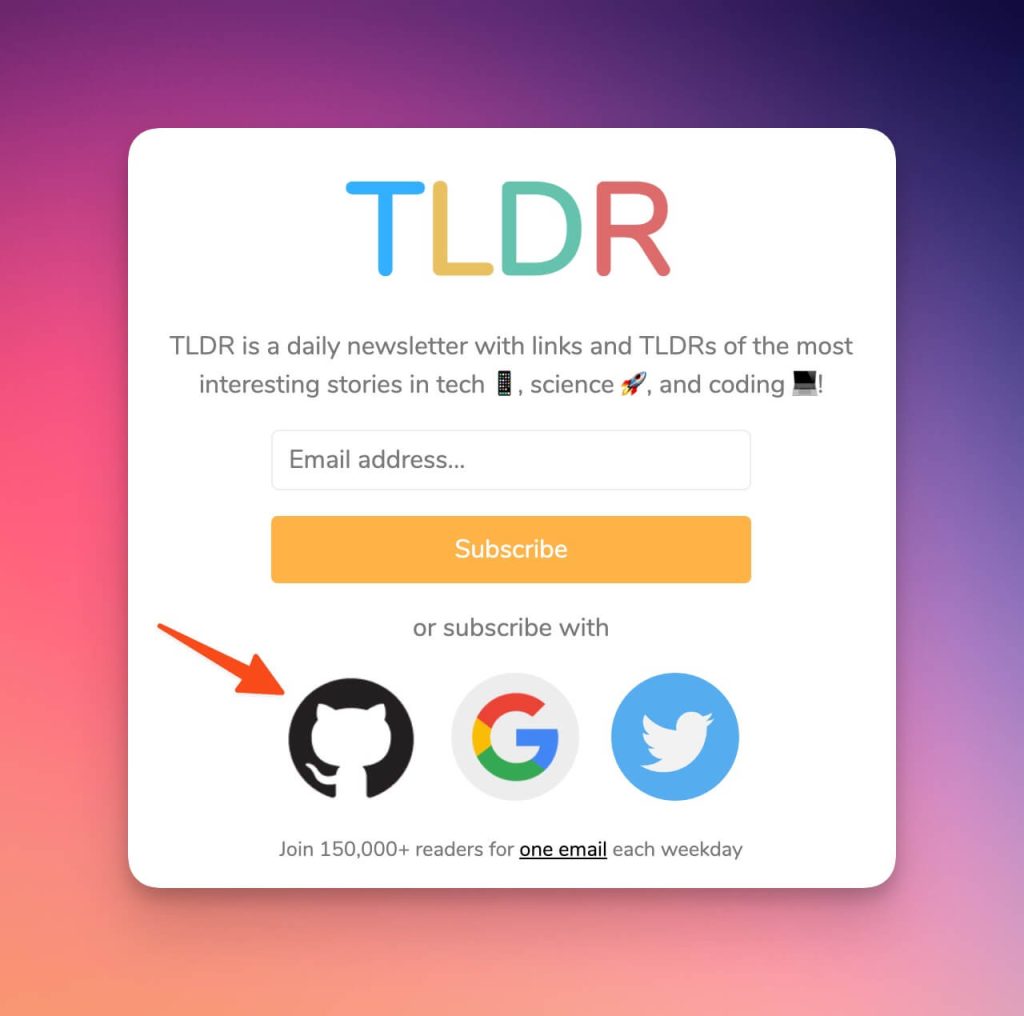
This is much more technical, but it’s doable. I looked at the directions and it seems a little intense, but I’m adding it to my future list of things to try.
As a side note, Dan has since removed those buttons, so I’m wondering if they weren’t giving him as big of a gain in conversion rate anymore.
3. Autofocusing the Cursor
This one sounds super technical, but it seems easy enough to implement.
You can add a piece of code to your email signup forms so that when someone visits the page, their cursor is already in the email box.
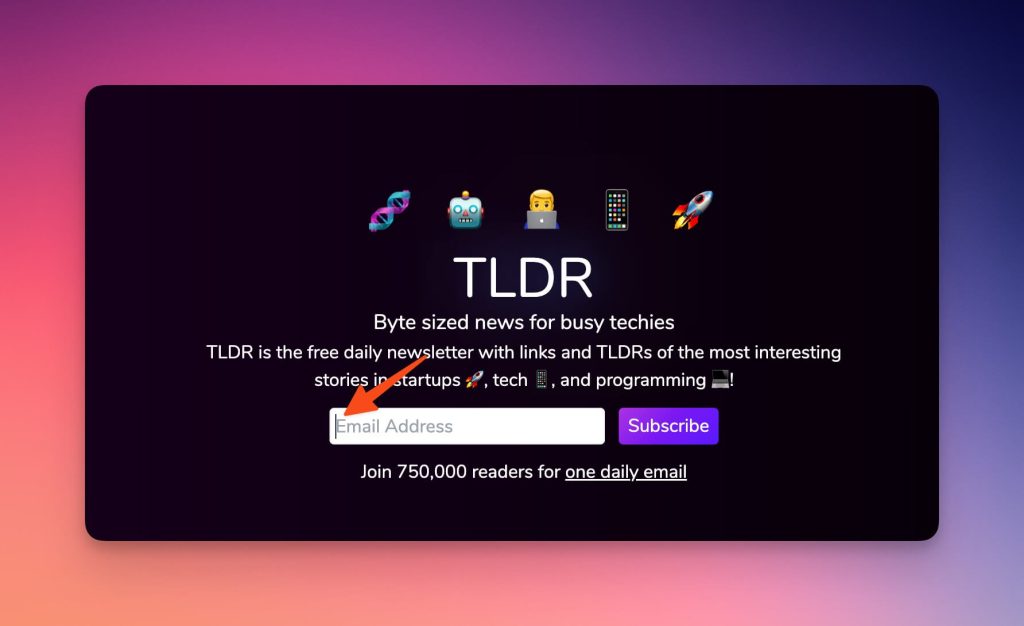
While this might sound like overkill, any way you can remove friction for the people visiting your page, the better.
This only works on Desktop but seems like a no-brainer to try out. Here are the directions I found that were the most helpful.
4. Minimalistic Sign-Up Page
If you look at Dan’s current sign-up page in the image above, you’ll notice that there isn’t much on the page.
That is 100% intentional.
When you set up a landing page to get people to sign up for your newsletter, you want to keep it minimal.
You don’t need to include links to all of the previous issues and paragraphs of text about what people get each week.
While you want to be clear about what this is about, too much can confuse or distract people.
I used to have the full latest issue of the newsletter on the landing page and that performed a lot worse than the current signup page because people would get distracted clicking on links and never come back.
Dan Ni, Indie Hackers post
When in doubt, take it out. 🙂
🤝 3. Other People’s Audiences
Leveraging other audiences is a great way to grow your audience without having to spend a ton of money.
The beauty of getting in front of other newsletter audiences is that..
…they already read newsletters!
You’re not trying to convince podcast listeners to go read a newsletter. Or going on someone’s YouTube channel to try and convince them to sign up for a newsletter.
It wouldn’t be as effective as meeting them where they already are. Dan has done this in two ways:
- Sponsoring other newsletters
- Cross-promotions
Let’s look at each.
Sponsoring Newsletters
Around the middle of 2021, Dan went on a big spree of sponsoring other newsletters. I found at least 5 different newsletters, and he has sponsored between 2 and 4 issues of each.
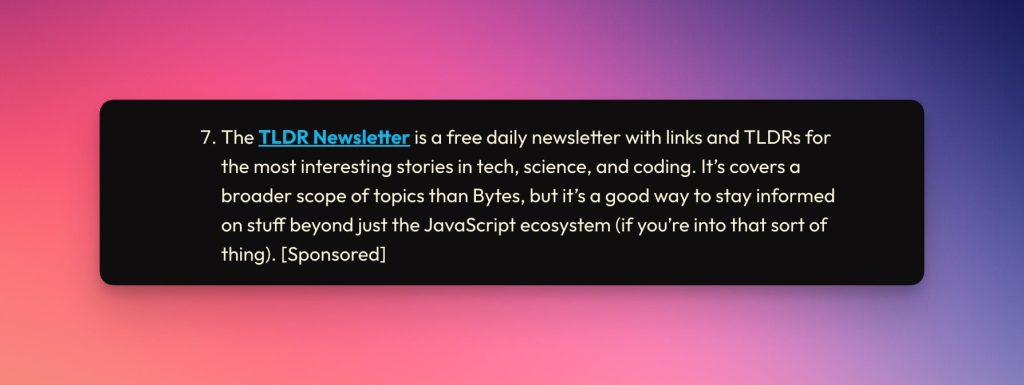
And those are just the ones I could find. I’m sure the number is probably closer to double that since some newsletters don’t have online versions or they quit publishing them.
- Web Tools Weekly -July 1, 2021
- Bytes.dev – July 5, 2021
- React Native – July 6, 2021
- Web Tools Weekly – July 15, 2021
- React Native – July 20, 2021
- Kotlin Weekly – July 25, 2021
- Kotlin Weekly – August 8, 2021
- Hey Designer – August 9, 2021
- Hey Designer – August 10, 2021
- Hey Designer – August 11, 2021
- Hey Designer – August 12, 2021
I don’t have numbers to say whether or not these were successful. But, at that point, he already had a lot of subscribers, so I have to wonder if there wasn’t some overlap between their audiences and the one he already had.
You don’t see him sponsoring many other newsletters recently.
♻️ Cross Promotions
On top of paying to get in front of other audiences, you can also run cross-promotions with other creators.
Dan has done this quite a bit, and credits this as a top strategy he’s used to grow his audience early on.
As he mentioned before, this is a percentage-based growth strategy.
That means if you have a small newsletter, you can reach out to small newsletters.
As you grow, you can reach out to bigger and bigger creators to cross-promote with.
But at a certain point, I have to imagine this strategy no longer works as effectively.
You probably already have a ton of overlap if they are similar audiences.
The Growth of TLDR
TLDR is an example of a massively successful curated newsletter that doesn’t even have a proper logo or super robust website (sorry Dan).
It can be easy to get caught up in making things looks super fancy, but most of the time it’s the content that’s going to lead to your success.
A few things we learned from Dan:
✅ Make your website fast
✅ Make it easy for people to sign up
✅ Collaborate with other newsletters
✅ And don’t be afraid to use paid advertising.
Thanks for making it all the way to the end of the post. I hope you enjoyed it and got something tactical out of it.
These posts take over 20 hours to put together each week.
If you’re on Twitter, I’d appreciate it a TON if you would like or share this thread about the story you just read. Thanks!
